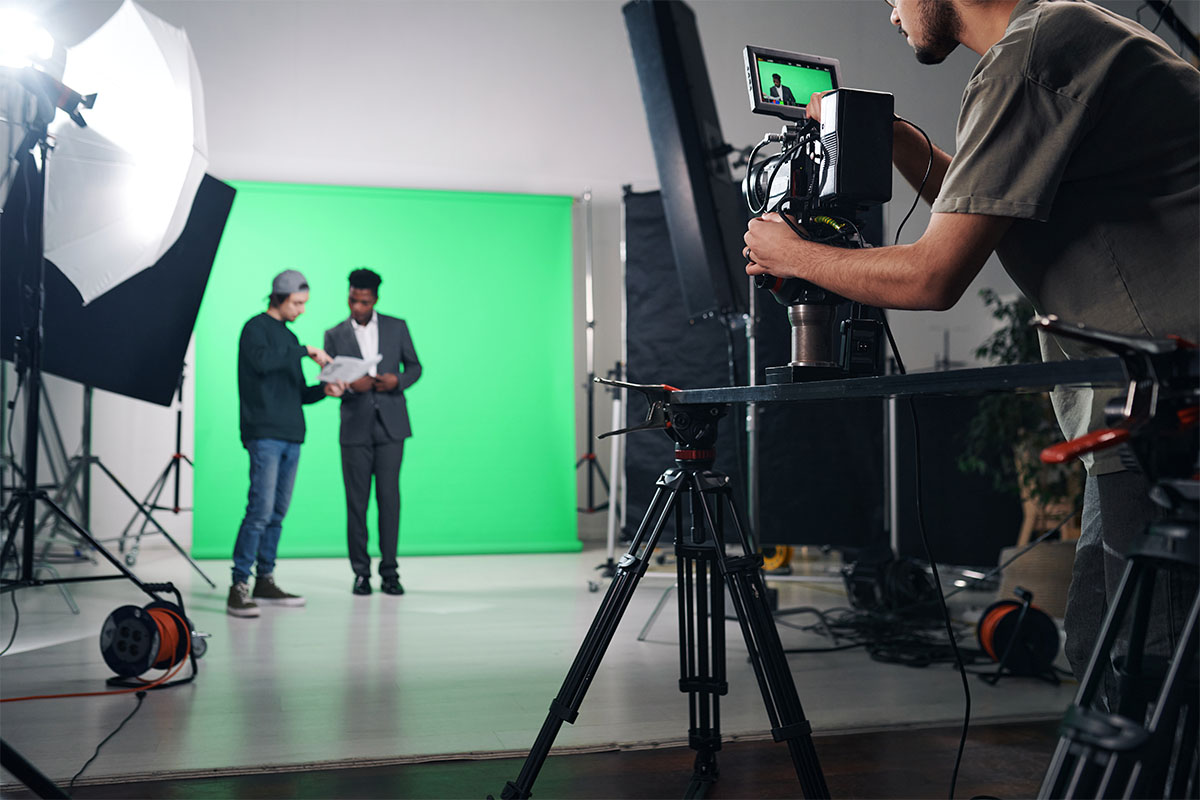
Video Production Company Johannesburg: Special Effects
Special effects (SFX) have long been at the heart of cinema and video production, transforming how stories are told on screen. The ability to make the impossible look real, or create worlds beyond our own, has evolved considerably since the early days of film. From the humble beginnings of Claymation to the sophisticated CGI we see today, SFX have continually pushed the boundaries of what is possible. For a video production company Johannesburg, these advancements have opened up new possibilities for creating visual content that competes on a global scale. In this article, we will explore the history of special effects, discuss current trends, and look at where the future of SFX might be headed.
Early Techniques: Claymation and Stop-Motion
In the early years of cinema, special effects were done using hands-on, physical techniques. One of the most iconic methods of storytelling was stop-motion animation, which uses photographs of models or objects moved in small increments to create the illusion of movement. Claymation, a subset of stop-motion, involved creating characters or scenes out of malleable materials like clay.
Early films such as King Kong (1933) made use of stop-motion to animate giant creatures, while later, the likes of Wallace & Gromit used claymation to bring characters to life with incredible charm and detail. These techniques required immense patience and artistry, as each frame had to be captured individually, with tiny adjustments made to the model or set between shots.
The process was time-consuming, and the results were sometimes a bit rough around the edges, but the magic of claymation and stop-motion remains an integral part of the evolution of special effects. Though technology has advanced, the craft of animating in this way continues to have a place in the world of animation and video production today.
Advancements in Special Effects: Miniatures, Matte Paintings, and Optical Effects
With the arrival of more sophisticated film technology in the mid-20th century, filmmakers began to experiment with new methods for creating special effects. One popular technique was the use of miniatures, where scaled-down versions of objects or sets were filmed to create the illusion of full-sized structures. Whether it was an entire city or a spaceship, miniatures allowed filmmakers to create larger-than-life scenes without the expense of constructing full-scale models.
Alongside miniatures, matte paintings became an essential tool in building worlds. Matte paintings were large, highly detailed artworks that would be used as backgrounds in film. In some instances, these paintings would be combined with live-action footage to make it appear as though the actor was interacting with an elaborate environment.
Additionally, optical effects were fundamental in special effects. Techniques like compositing allowed filmmakers to layer multiple pieces of footage to create complex scenes, such as having an actor appear in front of a backdrop that was filmed separately. By combining all these methods—miniatures, matte paintings, and optical effects—filmmakers could create scenes that were visually impressive, even if the technology of the time was limited.
The Rise of Computer-Generated Imagery (CGI)
The 1990s marked the beginning of a major shift in special effects with the rise of computer-generated imagery (CGI). Early uses of CGI appeared in films like Tron (1982), but it was Jurassic Park (1993) that truly revolutionised how we viewed CGI. The lifelike dinosaurs in Jurassic Park showcased what CGI was capable of—creating creatures and environments that were indistinguishable from reality.
As CGI technology advanced, it became more integrated with practical effects. Films like The Matrix (1999) used CGI to create iconic visual effects, such as the slow-motion “bullet time” shots that became one of the movie’s signature sequences. These developments opened the door to even more complex effects, enabling filmmakers to create previously unimaginable worlds and characters.
Today, CGI is ubiquitous in nearly every film and video production. Whether it is for creating vast digital landscapes or digital doubles of actors, CGI continues to evolve, offering production teams endless possibilities for visual creativity. For a video production company Johannesburg, CGI has become an indispensable resource for creating visuals that interest modern audiences like never before.
Current Trends in Special Effects
With CGI being a primary tool in modern video production, the industry is now embracing advanced technologies that make special effects even more immersive. Two of the most exciting trends in special effects today are virtual reality (VR) and augmented reality (AR).
- Virtual Reality (VR) offers an entirely new way of experiencing videos. By creating fully interactive environments, VR allows audiences to immerse themselves in a 360-degree world where they can explore the story from any angle. While still in its infancy, VR has enormous potential in video production, especially for interactive storytelling and video games.
- Augmented Reality (AR), on the other hand, overlays digital images onto the real world. AR is already being used in advertising, gaming, and even film. It has the potential to change how we experience films, allowing us to interact with characters or elements from a movie in real time.
Another trend gaining traction in special effects is real-time rendering. This technology allows video production teams to see visual effects in real-time as scenes are being shot, rather than waiting for the post-production process to finish. This is particularly beneficial as it gives production teams more control over the final product.
Finally, artificial intelligence (AI) is starting to play a role in the creation of special effects. AI algorithms are being used to generate realistic environments, characters, and even entire scenes. This technology may one day allow for effects to be created more efficiently, though it also raises questions about the future of creative jobs in the industry.
The Role of Client Feedback in Post-Production
After filming is completed, the post-production process begins. During this phase, the raw footage is edited, sound is added, and special effects are incorporated. One key component of post-production is client feedback. After the initial edit is presented, clients typically provide feedback on various aspects of the production, such as the pacing, sound design, and visual effects.
In video production, especially for a video production company Johannesburg, the feedback process is essential for refining the final product. Client feedback helps ensure that the video aligns with the intended message, tone, and vision. This collaborative process allows the production team to make necessary adjustments, whether it is refining visual effects, improving audio clarity, or adjusting the pacing of the film.
This feedback loop continues until the video meets the expectations of the client and aligns with the creative direction set at the start of the project. The goal is always to deliver a high-quality product that satisfies the client’s objectives while maintaining the artistic integrity of the project.
The Future of Special Effects
As we look to the future, the next frontier in special effects is likely to involve the development of even more advanced technologies. Holography and quantum computing could drastically change how special effects are created and experienced. Holographic images, which project three-dimensional visuals into physical space, may one day replace traditional screens, allowing for fully immersive experiences.
In addition, the rapid development of deepfake technology and digital actor creation raises ethical questions about how technology will be used. While these technologies can recreate lifelike performances of actors, there are concerns about their potential misuse in areas like misinformation and unauthorised use of likenesses. As technology progresses, the industry will likely need to establish clear ethical guidelines to navigate these issues.
As video production companies like those in Johannesburg continue to adapt to new technologies, it will be exciting to see how future advancements in special effects will shape the way films are made and consumed.
Conclusion
Special effects have come a long way from the early days of Claymation and stop-motion animation. From miniatures and matte paintings to the groundbreaking use of CGI, SFX have continually evolved, pushing the boundaries of what is possible in video production. With new technologies like VR, AR, and AI on the horizon, the future of special effects is bright, offering new opportunities for creativity and storytelling. For a video production company Johannesburg, understanding the evolution of special effects and staying ahead of these trends is crucial in providing high-quality, innovative video content. As the industry continues to evolve, the possibilities for visual effects will only expand, opening the door to even more exciting creative opportunities.
From Claymation dinosaurs to CGI galaxies, the world of special effects keeps evolving—just like your video content should! Partner with Sound Idea Digital, your trusted video production company Johannesburg.
We are a full-service Web Development and Content Production Agency in Gauteng specialising in Video Production, Animation, eLearning Content Development, Learning Management Systems, and Content Production.
Contact us for a quote. | enquiries@soundidea.co.za | https://www.soundideavideoproduction.co.za| +27 82 491 5824 |

